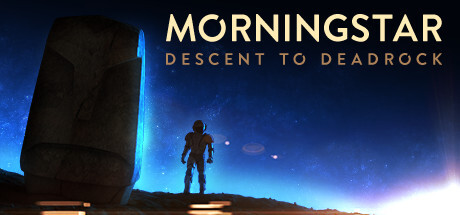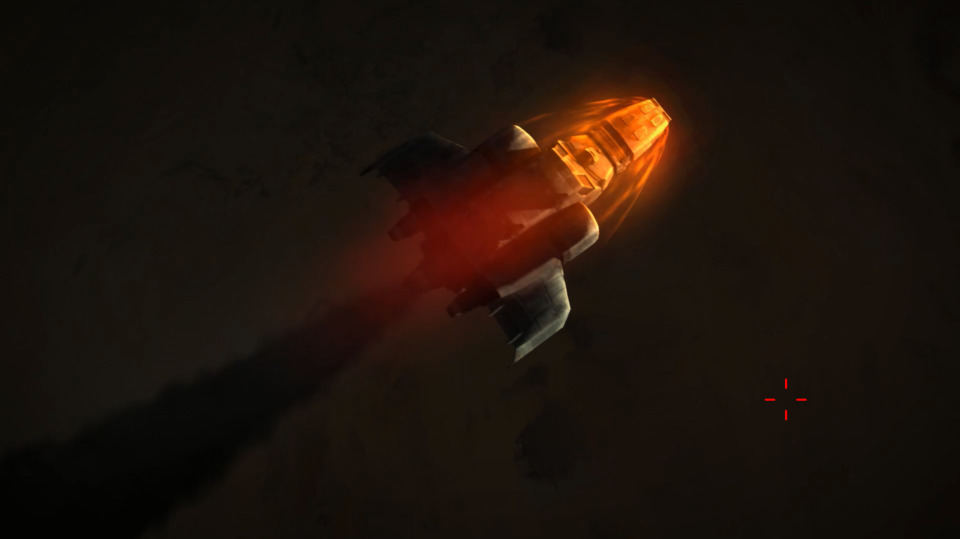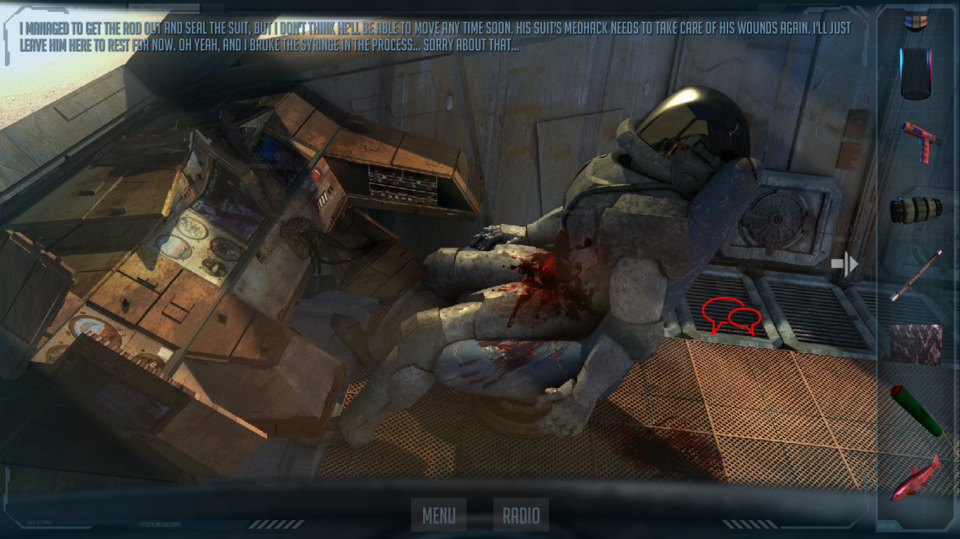Indie Game of the Week 270: Morningstar: Descent to Deadrock
By Mento 2 Comments

Major Mento to Ground Control, reporting in that I'm playing another adventure game based on outer space shenanigans. Floating over here in a most peculiar way this week is Morningstar: Descent to Deadrock, a 2015 (practically vintage!) point-and-click Indie from studio Red Herring Labs and released on Steam and mobile devices (I'm playing it on the former). For the longest time, I had this and another game, J.U.L.I.A.: Among the Stars, confused. That mix-up was dispensed with when I covered J.U.L.I.A. early last year (IGtoW 203), though I felt it only fair to cover the other eventually. Both games depict spacecraft and space travel in a semi-realistic fashion, have mystery-laden sci-fi stories revolving around crashed ships and missing personnel, and are some deliberately traditional point-and-click adventure games that use an uncommon first-person perspective. In that last case, they're both a little similar to Legend Entertainment's Mission Critical as well (which I covered here), especially as Morningstar starts you off by fixing up the ship with MacGuyver-style jerry-rigged item solutions that I'm fairly sure would not stand up to the stringent rigours of traversing the cosmos.
In Morningstar: Descent to Deadrock, the protagonist - Powell - survives a sudden dramatic crash of his ship - the titular Morningstar - as it makes its subtitular descent to the planet Deadrock, named for probably obvious enough reasons (and the game is also quick to point fun at its nominal directness). The only other survivor is the ship's captain, Novak, who has suffered a serious injury in the crash which he uses as an excuse to get Powell to do everything. The game's relatively brief story has you fix up the ship to eliminate imminently fatal issues, like repairing the broken carbon dioxide filter and patching various hull breaches leaking precious air to the lifeless desert planet outside, and once those are settled Powell takes off to another nearby wreckage to look for spare parts. The game's sense of mystery escalates from there as you investigate the deaths of the other ship's crew, but it's not a particularly dense plot to untangle: more that it's a series of tense situations in which you're required to use your resourcefulness and all the crap you've picked up to resolve a series of problems. An in-game hint system, which is just calling Novak over the radio for advice, provides some idea of what you ought to be doing next if not specific instructions as to how to achieve it, making it a good way to keep abreast of the current scenario and what goals you need to meet to move the story along. There's a whole lot of tinkering with mechanical whoosits like plasma injectors, cables, control panels, filters, ducts, and "nanoglue," but there's also a considerable number of puzzles that can be solved by hitting something with a wrench or shooting it, so the game's approach to scientific accuracy probably errs closer to the movie Armageddon than to Apollo 13. Probably for the best, honestly, since I don't want to be calling NASA like it's the Nintendo Power hints hotline. I would hope they have better things to do.

The game's interface is roughly analogous to Legend Entertainment's old model, except items are added to a sidebar rather than beneath the viewing screen. Also, hotspots aren't immediately apparent until you move the cursor over one, after which they're always sort of visible in case you need to interact with them again. Many hotspots provide items, though there's just as many that exist only to offer flavor text, and it's worth sweeping the screen a few times so you don't miss a vital panel or a random tiny object lying on the ground. The active viewscreen is relatively compact, making it harder to miss fine details, and examining inventory items and hotspots usually includes a hint as to what you might need them for. I appreciated the little visual pop-ups that helpfully frame hotspots; they're not dissimilar to those used in Star Trek shows, particularly The Next Generation.
As for the presentation, the game's graphics are overall decent and perform their job adroitly. The game's visuals tend towards the unimpressive in terms of visual splendor, but what broken spacecraft and Tatooinian desert planet vistas it depicts are done well enough with humans always shown in suits presumably for the sake of avoiding cheap-looking CG human models (an issue J.U.L.I.A. ran into often with its on-screen human protagonist). The animations for the intro and outro scenes were pretty good too considering the game was made with what I imagine isn't a huge budget. The music is both atmospheric and unobtrusive with its usage, which is ideal for a game like this where you need time to think. The voice acting, however, is what I would call this game's "dump stat"; though there's only two VAs, they're both pretty bad. The protagonist, Powell, has a certain dismissiveness to his line-readings that make every "I can't combine those two items" or "I can't do anything with this hotspot" canned response sound condescending, like he's telling an eight-year-old why throwing a flare into the ship's plasma-core engine isn't a great idea (though he does have a point there). It makes the game sometimes feel like a "take your child to a life-threatening marooning day" where he's letting his kid call the shots, but only if they get the right answers. The other character, Novak, has a thick eastern European accent that suggests his VA learned his side of the script phonetically, but then I imagine with some Indie projects you sometimes have to make do with whomever in your friend circle is the most fluent in a foreign language (Red Herring Labs is Hungarian, as far as I can tell). Oh great, now I'm the one being condescending.

Morningstar: Descent to Deadrock often feels like an episode of a slightly B-grade sci-fi TV show that was probably filmed up in Vancouver, for both better and worse but mostly the former. It has a pleasingly compact story that gets in and then out as soon as it's established its mystery and degree of peril - while still leaving some questions unanswered for potential sequels - with an equally palatable brevity to its world design, never giving you so many hotspots and places to explore that you become paralyzed with choice. That you're solving all your issues with engineering ingenuity and only occasionally with violence speaks to the thematic genre's strengths. It looks and sounds good, voice performances aside, and its puzzle difficulty is on the right side of solvable with its intuitive interface and non-explicit hint system. Its chief issue, of course, is that it's a very slight game in every respect. If you spot it on sale for next to nothing and are looking for an agreeable sci-fi yarn to occupy a few hours of your time, I might recommend you give it a shot (and J.U.L.I.A. or The Dig is always there if you want something a little more substantial and involved instead).
Rating: 4 out of 5.
| < Back to 269: SuperEpic: The Entertainment War | The First 100 | The Second 100 | > Forward to 271: Alwa's Legacy |
